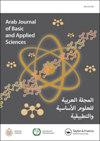新冠肺炎患者康复时间的建模与分析:贝叶斯方法
Q1 Mathematics
引用次数: 2
摘要
持续的新冠肺炎大流行改变了生活的方方面面。大多数新冠肺炎患者都会出现轻度至中度症状,但有些人可能会患上严重疾病。这种疾病有时可能会导致非常痛苦的死亡。Fréchet分布是一种灵活的生存时间分布。因此,在本文中,新冠肺炎患者的恢复时间由一个新的Fréchet-exponential(FE)分布建模,并在经典和贝叶斯范式中估计该分布的参数。由于使用信息先验的贝叶斯估计量不是封闭形式的,因此使用Lindley和Tierney–Kadane近似方法进行评估。通过模拟研究和新冠肺炎数据集获得的结果评估了Bayes估计量在最小风险方面优于经典估计量。从数学和图形上看,我们提出的模型适合数据集。Akaike信息准则、Bayesian信息准则、校正Akaike消息准则和Hannan-Quinn信息准则的最小值证明,对于关于新冠肺炎患者康复时间的数据集,FE分布比竞争对手的分布更适合。©2022作者。由Informa UK Limited出版,以Taylor&Francis Group的名义代表巴林大学进行交易。本文章由计算机程序翻译,如有差异,请以英文原文为准。
Modeling and analysis of recovery time for the COVID-19 patients: a Bayesian approach
The ongoing pandemic of COVID-19 has changed every aspect of life. Most of the people who become a victim of COVID-19 experience mild to moderate symptoms, but some people may become seriously ill. This illness, sometimes, may lead to a very painful death. The Fréchet distribution is one of the flexible distribution for survival time. Hence, in this article, the recovery time of COVID-19 patients is modeled by a new Fréchet-exponential (FE) distribution, and the parameters of the distribution are estimated in the classical and Bayesian paradigms. Since the Bayes estimators using informative priors are not in the closed form, the Lindley and Tierney–Kadane approximation methods are used for their evaluation. The results obtained through simulation studies and the COVID-19 data set assess the superiority of the Bayes estimators over the classical estimators in terms of minimum risks. Mathematically and graphically, it is shown that our proposed model appropriately fits the data set. The minimum values of Akaike information criterion, Bayesian information criterion, corrected Akaike information criterion, and Hannan-Quinn information criterion proves that the FE distribution better fit than the competitors' distribution for the data set about the recovery time of COVID-19 patients. © 2022 The Author(s). Published by Informa UK Limited, trading as Taylor & Francis Group on behalf of the University of Bahrain.
求助全文
通过发布文献求助,成功后即可免费获取论文全文。
去求助
来源期刊

Arab Journal of Basic and Applied Sciences
Mathematics-Mathematics (all)
CiteScore
5.80
自引率
0.00%
发文量
31
审稿时长
36 weeks
 求助内容:
求助内容: 应助结果提醒方式:
应助结果提醒方式:


